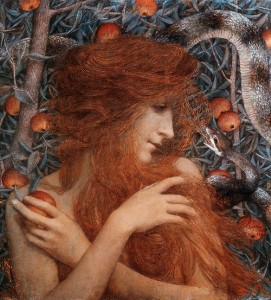


Category: Uncategorized
Peregrinations
August 2, 2013

Book excerpt at Return to Mago blog
July 5, 2013
Photo (adapted) Roweromaniak/ Wikimedia Commons.
The Hand of Kwan Yin
May 31, 2013 This is the statue of the goddess Kwan Yin which I have on my altar. It was given to me by a student after my first Kwan Yin statue was broken by my cat – not Samhain, the cat I had before her, Misha.I was very grieved by the loss of this statue, not only because Kwan Yin is an important goddess to me, but because the statue was given to me by a good friend I had lost touch with. Someone explained to me, however, that porcelain statues of Kwan Yin are expected to break eventually, and that I should take the statue to a temple rather than dispose of it myself.Knowing how devastated I was by these events, one of my students was excited to find a statue she thought was Kwan Yin at a garage sale. “I don’t know if this is Kwan Yin but I thought it might be,” she said. “But there’s a hole in it where one of the hands should be. We’ve been trying to figure out what that’s for.” I knew exactly what the hole was for, because my first statue had the same feature. The hole is for a detachable hand that is removed from the statue when making a request. The supplicant carries the hand around with her until the prayer is granted, then returns it to the goddess.Kwan Yin is the Chinese Buddhist goddess of mercy, “She who hears the cries of the world.” She is a complex and multifaceted goddess who has been the subject of much scholarship, particularly with the rebirth of the Goddess Movement. Even before this she had a sizable devoted following, among Westerners as well as Chinese. I first heard about Kwan Yin at a lecture given by the editor of a paper I worked on, Libby Gregory. In the dark ages before videos and the Internet, Midwesterners went to lectures for entertainment. I don’t know if it was a product of the big tent Christian revival experiences of the audience or if this is a common experience during discussions of Kwan Yin, but after Libby’s talk many people came forward and shared their miraculous experiences with Kwan Yin’s intervention. I was impressed.Because she introduced me to Kwan Yin, my feelings about this goddess are intertwined with my feelings about Libby. A small business owner and editor of the local left-wing paper, Libby was a driving force behind the progressive movement in our conservative town. To be honest I often thought of her as a bit of a nuisance, frequently calling me on the telephone requesting my services for hard journalistic assignments requiring a great deal of investigation. For some reason I almost always said yes, even though these assignments offered very little pay. It was another Kwan Yin miracle.Eventually I moved away to the West Coast and didn’t think too much about Libby. I liked her, but I certainly didn’t give her my new phone number. It was when I was back for one of my infrequent visits that I learned Libby had died several years earlier, killed in a plane crash. Although Libby had never been a huge figure in my personal life, I could not imagine the town without her. She was like the Olentangy River or the state university campus – she was a part of the community structure. Her loss left a hole that could not be replaced.It did not surprise me to learn that “killed in a plane crash” only told part of the story. Libby had stayed behind to help other passengers as the smoking plane was being evacuated, and so was one of the few who did not survive. We could wish she had left the burning aircraft while she had a chance, but if she had done that she wouldn’t have been the person she was.When I was ordained in the Fellowship of Isis, I was asked to make a pledge to three goddesses, one of which I would be “priestess of” and two more I would agree to serve. I chose Kwan Yin as one of my three goddesses. Not because of Libby exactly, but because of mercy.My student took the statue back home and asked her woodworking husband to make a new hand for it. I’ve always wondered about the missing hand, if someone prayed for something they wanted very much and the request was never granted. I hope by this time they have found recompense for their loss.
This is the statue of the goddess Kwan Yin which I have on my altar. It was given to me by a student after my first Kwan Yin statue was broken by my cat – not Samhain, the cat I had before her, Misha.I was very grieved by the loss of this statue, not only because Kwan Yin is an important goddess to me, but because the statue was given to me by a good friend I had lost touch with. Someone explained to me, however, that porcelain statues of Kwan Yin are expected to break eventually, and that I should take the statue to a temple rather than dispose of it myself.Knowing how devastated I was by these events, one of my students was excited to find a statue she thought was Kwan Yin at a garage sale. “I don’t know if this is Kwan Yin but I thought it might be,” she said. “But there’s a hole in it where one of the hands should be. We’ve been trying to figure out what that’s for.” I knew exactly what the hole was for, because my first statue had the same feature. The hole is for a detachable hand that is removed from the statue when making a request. The supplicant carries the hand around with her until the prayer is granted, then returns it to the goddess.Kwan Yin is the Chinese Buddhist goddess of mercy, “She who hears the cries of the world.” She is a complex and multifaceted goddess who has been the subject of much scholarship, particularly with the rebirth of the Goddess Movement. Even before this she had a sizable devoted following, among Westerners as well as Chinese. I first heard about Kwan Yin at a lecture given by the editor of a paper I worked on, Libby Gregory. In the dark ages before videos and the Internet, Midwesterners went to lectures for entertainment. I don’t know if it was a product of the big tent Christian revival experiences of the audience or if this is a common experience during discussions of Kwan Yin, but after Libby’s talk many people came forward and shared their miraculous experiences with Kwan Yin’s intervention. I was impressed.Because she introduced me to Kwan Yin, my feelings about this goddess are intertwined with my feelings about Libby. A small business owner and editor of the local left-wing paper, Libby was a driving force behind the progressive movement in our conservative town. To be honest I often thought of her as a bit of a nuisance, frequently calling me on the telephone requesting my services for hard journalistic assignments requiring a great deal of investigation. For some reason I almost always said yes, even though these assignments offered very little pay. It was another Kwan Yin miracle.Eventually I moved away to the West Coast and didn’t think too much about Libby. I liked her, but I certainly didn’t give her my new phone number. It was when I was back for one of my infrequent visits that I learned Libby had died several years earlier, killed in a plane crash. Although Libby had never been a huge figure in my personal life, I could not imagine the town without her. She was like the Olentangy River or the state university campus – she was a part of the community structure. Her loss left a hole that could not be replaced.It did not surprise me to learn that “killed in a plane crash” only told part of the story. Libby had stayed behind to help other passengers as the smoking plane was being evacuated, and so was one of the few who did not survive. We could wish she had left the burning aircraft while she had a chance, but if she had done that she wouldn’t have been the person she was.When I was ordained in the Fellowship of Isis, I was asked to make a pledge to three goddesses, one of which I would be “priestess of” and two more I would agree to serve. I chose Kwan Yin as one of my three goddesses. Not because of Libby exactly, but because of mercy.My student took the statue back home and asked her woodworking husband to make a new hand for it. I’ve always wondered about the missing hand, if someone prayed for something they wanted very much and the request was never granted. I hope by this time they have found recompense for their loss.
REVIEW Jezebel: The Untold Story of the Bible’s Harlot Queen by Lesley Hazelton
May 10, 2013 Just as there is an aphorism that “the victors write history,” there is another that says “history is continually rewritten.” Both of these sayings apply to this rehabilitation of the biblical queen. Hazelton views Jezebel’s story as an earlier version of tensions between liberalism and religious zealotry, drawing direct parallels to present day conundrums over Christian, Jewish, and Muslim fundamentalism. Hazelton’s prose is spellbinding, and though the book does not read like a novel, the story is riveting all the same. Rhetorical asides are satisfying and engrossing. There are many good, satisfying quotes from this book:
Just as there is an aphorism that “the victors write history,” there is another that says “history is continually rewritten.” Both of these sayings apply to this rehabilitation of the biblical queen. Hazelton views Jezebel’s story as an earlier version of tensions between liberalism and religious zealotry, drawing direct parallels to present day conundrums over Christian, Jewish, and Muslim fundamentalism. Hazelton’s prose is spellbinding, and though the book does not read like a novel, the story is riveting all the same. Rhetorical asides are satisfying and engrossing. There are many good, satisfying quotes from this book:
When your story is written by those in passionate opposition to everything you believe in, it will be, to put it mildly, warped. Everything becomes twisted; every action, every gesture, becomes not only suspect but turned on its head. The wildest rumors are passed off as fact. Inconvenient facts are ignored or edited out, relegated to oblivion, until all we are left with is not a real person but an image, a morality-tale character, which is how Jezebel would become a kind of wicked witch of the east.
The first thing Hazelton does is to dispense with the common portrayal of Jezebel as a sexualized being, a harlot. This was rather disappointing for me, because that was what motivated me to buy the book. I had read in another review that this book challenges the idea of the “sacred prostitute” in ancient Near East religions. I myself have become frustrated with the “sacred prostitute” terminology, having come to the conclusion that expressions of sexuality in ancient religions bears no resemblance to prostitution, sacred or otherwise. The concept of the “sacred prostitute” has long been politically used to denigrate priestess cults, and more recently to glorify prostitution. I would love to see this phrase stricken from our spiritual conversation.But if I hoped to find a more nuanced exploration of feminine sexuality in religion I was disappointed here on many levels. Hazelton begins her dismissal of the harlot angle by expounding on the limitations of nineteenth century archaeologists, always exasperating because at this point I can see clearly where such a setup is heading. After raking the pioneering archaeologists over the coals, she concedes that they did not come up with this sacred prostitute theory out of nowhere, then proceeds to accuse the Greek historian Herodotus of inventing the concept whole cloth. Hazelton’s treatment of this subject exemplifies problems with her narrative found throughout the book: the naïve acceptance of twenty-first century archaeological perspective, which has its own patriarchal biases; the impulse to conflate goddesses along with a generally poor understanding of Semitic polytheistic cultures; and a tendency for her analysis to fall into the very absolutism she decries in the prophets of Israel.But despite the flaws in perspective, I would not write off this book. The political drama surrounding the story is fascinating, and although this is not my forte, it seems that Hazelton has a good grasp of Old Testament history. She has visited most of the places where the action occurs, and her description of the settings adds an immediacy to her account. There is a map in the front of the book which is helpful.In the end I agree with Hazelton’s refusal to examine Jezebel’s life and legacy in sexual terms. The new framing works, at least for now, though perhaps in the future a biographer will dismiss the theme of religious fanaticism as emphatically as Hazelton dismisses the sexual theme. Like many a good myth, the story of Jezebel will probably always be more useful than it is true.
Stay Updated on Hearth Moon Rising’s blog
April 2, 2013
MLK 2013
January 21, 2013A Look Ahead
January 4, 2013
Through Another Doorway
January 1, 2013 Janus is the Roman god of the new year, with two faces looking toward the past and the future. In his right hand he holds a key and in his left a staff. He is a god of peace whose worship was more central in matrifocal times. The month of January is named for him. Janus is a winter god, the counterpart of the summer goddess Juno. From the Pagan Book of Days:
Janus is the Roman god of the new year, with two faces looking toward the past and the future. In his right hand he holds a key and in his left a staff. He is a god of peace whose worship was more central in matrifocal times. The month of January is named for him. Janus is a winter god, the counterpart of the summer goddess Juno. From the Pagan Book of Days:
Janus is the male equivalent of one of the versions of the goddess Juno-Janus, who in her two-faced aspects of Antevorta and Postvorta looks simultaneously forward and backward as does Janus. January marks the beginning of the new year yet contains elements of that which went before. Its quality is thus one of new possibilities but constrained by that which took place in the old year before it.
SourcesJordan, Michael. Encyclopedia of Gods: Over 2,500 Deities of the World. New York: Facts on File, 1993.Pennick, Nigel. The Pagan Book of Days: A Guide to the Festivals, Traditions, and Sacred Days of the Year. Rochester, VT: Destiny Books, 1992.
